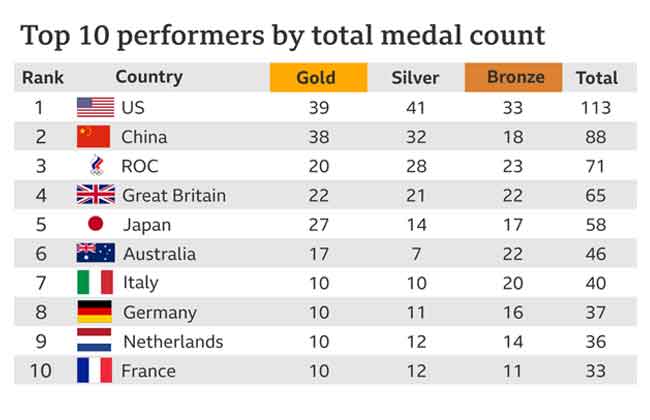Fitness and Training Tips for Aspiring Athletes: Being a successful athlete requires more than just talent and passion. It demands dedication, discipline, and a well-rounded fitness and training regimen. Whether you aspire to compete professionally or simply want to improve your athletic skills, understanding the proper methods of fitness and training can make a significant difference in your performance.
Set clear and achievable goals
The foundation of any successful training program begins with setting clear, achievable goals. Well-defined goals provide direction, motivation and a sense of purpose in your fitness journey. Whether it’s improving your speed, increasing your strength, or mastering a specific skill in your sport, knowing what you’re working toward helps you stay focused and track your progress.
How to set effective goals:
- Be specific: Instead of saying, “I want to get stronger,” say, “I want to increase my squat by 10% in the next three months.”
- Set short-term and long-term goals: Short-term goals (eg, weekly or monthly) motivate you, while long-term goals give you something bigger to aim for.
- Make them measurable: Goals should be measurable so that you can effectively track your progress. For example, “run a 5K in 25 minutes” is better than “run fast.”
- Be realistic: Aim for challenging but achievable goals to prevent burnout or frustration.
Focus on strength and conditioning
Strength and conditioning are important components for any athlete, regardless of their sport. Building muscle strength increases overall performance, reduces the risk of injury and improves endurance.

Core strength training exercises:
- Compound movements: Exercises like squats, deadlifts, bench presses and pull-ups engage multiple muscle groups, making them ideal for building functional strength.
- Bodyweight exercises: Push-ups, lunges, planks, and burpees are great for building core strength, improving stability, and maintaining balance.
- Plyometrics: Jumping exercises such as box jumps or lateral bounds improve explosive power, which is essential for sports that require quick movements.
Incorporate a mix of weight training and bodyweight exercises into your fitness routine to build a balanced physique and strength that translates directly to your sport.
Prioritize flexibility and mobility
Flexibility and mobility are often overlooked by athletes, but they are extremely important for injury prevention and improving range of motion. Flexibility refers to the ability of your muscles to stretch, while mobility focuses on how well your joints move through their full range of motion. Together, they increase overall performance and reduce the risk of muscle strain or joint injury.
How to improve flexibility and mobility:
Dynamic Stretches: Include dynamic stretches in your warm-up to activate muscles and improve joint mobility. Movements like leg swings, arm circles, and walking lunges are great examples.
Static Stretches: Perform static stretches after your workout to maintain or increase flexibility. Hold each stretch for 20-30 seconds, focusing on major muscle groups such as hamstrings, quadriceps, shoulders and hips.
Foam rolling: Use a foam roller to release tension and improve muscle recovery. Roll slowly on the tight spot, keeping pressure on the sore spot for a few seconds.
Making flexibility and mobility work a regular part of your training routine can improve agility, reduce stiffness and keep you in peak physical condition.
Include cardiovascular training
Cardiovascular endurance is essential for any athlete, regardless of their sport. Strong cardiovascular health allows you to perform at higher intensities for longer periods of time without tiring.
Types of Cardiovascular Training:
- Interval Training: High-intensity interval training (HIIT) involves short bursts of intense activity followed by periods of rest. This type of cardio is effective for speed, endurance and burning calories in a short amount of time.
- Steady-state cardio: Running, cycling or swimming at a consistent pace for extended periods of time helps build aerobic capacity and endurance.
- Sport-Specific Drills: Match your cardio workouts to your sport. For example, soccer players may focus on sprints, while basketball players may practice shuttle runs or jumping.
A mix of interval and steady-state cardio should be incorporated into your weekly fitness routine to ensure you maintain optimal energy levels during competition, improving both the aerobic and anaerobic systems.
Rest and recovery are key
Rest and recovery are just as important as training. Without proper recovery, your body won’t have time to repair muscles, replenish energy stores, or recover from fatigue. Overtraining can lead to injury, burnout and decreased performance.
Recovery Tips for Athletes:
- Get enough sleep: Aim for 7-9 hours of quality sleep per night. Sleep is when your body repairs and builds muscle, and it plays an important role in cognitive function, which is important for performance.
- Active recovery: On rest days, engage in light activity such as walking, swimming, or yoga to promote blood flow without overexertion.
- Stay hydrated: Proper hydration aids muscle recovery, regulates body temperature, and supports overall health. Drink plenty of water, especially after an intense workout.
- Listen to your body: Get extra rest if you feel particularly sore, tired or notice any signs of injury. Pushing through pain often does more harm than good.
Remember, recovery is part of your training cycle, and giving your body the time it needs to recover will help you be stronger and more ready for the next session.
Nutritional fuel performance
Proper nutrition plays an important role in athletic performance. Fueling your body with proper nutrition ensures that you have the energy to train effectively, recover quickly and perform at your best during competition.
Key Nutrition Guidelines for Athletes:
- Balance your macronutrients: Make sure you’re getting the right ratio of carbohydrates, proteins, and fats. Carbohydrates provide energy, proteins help repair muscles, and fats support overall health and energy balance.
- Eat before and after a workout: Before training, eat a meal or snack rich in carbohydrates and a small amount of protein. Next, focus on protein and carbohydrates to promote muscle recovery and replenish glycogen stores.
- Stay hydrated: Drink water throughout the day and consider electrolyte drinks if you engage in prolonged or intense activity.
- Monitor portion sizes: Fueling your body doesn’t mean overeating. Pay attention to portion sizes and adjust them based on your activity level.
By eating a balanced, nutrient-dense diet, you can boost performance, aid muscle recovery, and ensure long-term health.
Matters of mental well-being
Athletic success is as much mental as it is physical. Developing a strong mental game can give you a competitive edge, help you push through challenges, and keep you focused on your goals.
Mental Training Techniques:
- Visualization: Visualize yourself performing at your best. Picture successful movements, winning competitions, or achieving personal goals.
- Stay Positive: Maintain a positive attitude even in the face of setbacks. Mental resilience can help you focus on long-term goals.
- Meditation and Mindfulness: Practice mindfulness techniques to reduce stress and anxiety, improve focus, and increase performance under stress.
Training your mind to stay sharp, focused and resilient is just as important as physical training for any aspiring athlete.
For aspiring athletes, creating a well-rounded fitness and training program is key to reaching your goals. By setting clear goals, incorporating strength, flexibility, cardio and proper recovery, you can increase your athletic performance and reduce your risk of injury. Additionally, paying attention to nutrition and mental well-being will give you the overall foundation you need for long-term success.
Read Also: Boxing Matches and Results
![]()





